Tom's Guide Verdict
With excellent traction and powerful, natural assist, the Moterra makes short work of the toughest climbs. But it’s the nimble and playful handling on descents that make it truly shine.
Pros
- +
Excellent traction on climbs
- +
Playful and easy to get off the ground
- +
Aesthetics don’t scream e-bike
Cons
- -
Small screen numbers make it hard to tell what assist mode you’re in
Why you can trust Tom's Guide
Weight: 44 pounds
Frame: Carbon fiber
Motor: Shimano EP801 mid-drive, 85Nm torque, 600 watts max
Battery: 601Wh, non-removable
Max advertised range: 43 miles
Rear suspension travel: Fox Float X Factory, 150mm
Front suspension travel: Fox Float Factory 36, 160mm
Wheel size: 27.5-inch rear; 29-inch front
Drivetrain: SRAM Eagle XO AXS, 12-speed, 10-52 rear cogs, 34T chainring
Brakes: SRAM Code Silver Stealth, hydraulic disc
Along the front range of the Rocky Mountains in Colorado, every mountain biker knows the first 20 to 60 minutes of your ride is headed uphill. Often, it’s a steep and difficult climb, and it’s usually under hot, direct sunlight. The appeal of an e-bike like Cannondale’s Moterra SL 1, therefore, becomes readily apparent.
But those big, ugly, long climbs usually lead to fast, fun, ripping descents on technical terrain, where the extra weight of an e-bike can become a notable detriment. More weight means more muscling in corners, and less responsive steering.
Yet the Moterra SL 1 impresses both up and down the mountain in a surprisingly nimble fashion. Its mid-drive Shimano motor made short work of the ugliest climb I could find, and it was so playful and easy to get off the ground on descents that it wasn’t long before I stopped thinking of it as an ebike at all.
Cannondale has made a super-refined trail bike, and the Moterra SL 1 belongs at the top of the list of capable, fun, and nimble e-mountain bikes (e-MTBs), and makes a great pitch for its place as among the best electric bikes available right now.
Cannondale Moterra SL 1 review: price and availability
The Moterra SL 1 costs $8,750 and is available for sale now through Cannondale's store. or your local Cannondale dealer, which you can find with the brand's dealer locator tool. Alternatively, you can pick up the SL 1 at third-party stores like REI.
Cannondale Moterra SL 1 review: design
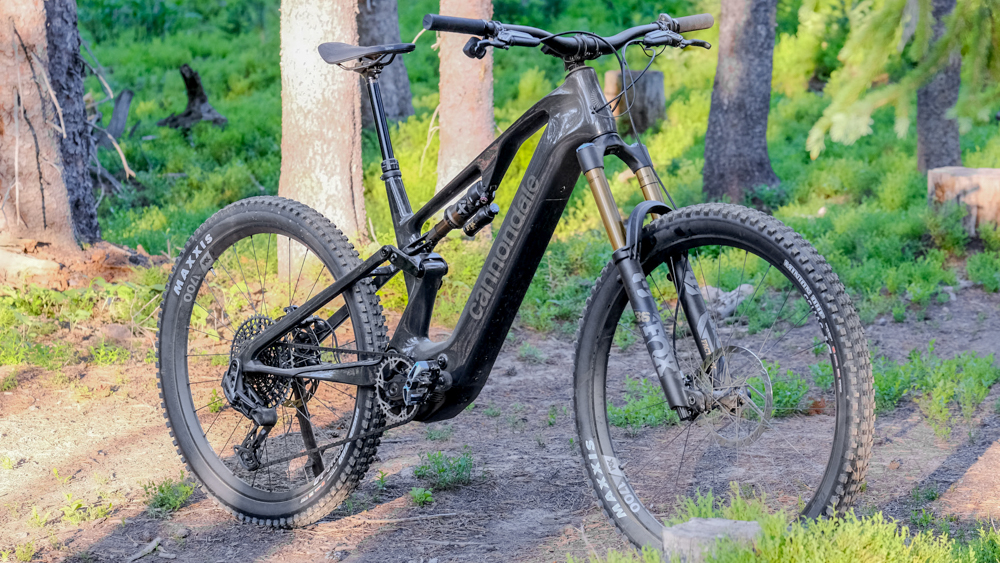
The Moterra SL 1 has a full carbon frame to reduce the weight, with the battery integrated into the down tube, which means its not removable. It has a mid-drive motor, which tends to be quicker to respond and helps balancing the weight in the middle of the bike.
You get a power button the top tube, with a handlebar-mounted head-up display with four modes; Eco, Trail 1, Trail 2, and Boost. The bike has a 12-speed drivetrain and hydraulic disc brakes from SRAM. Plus, it has a Proportional Response design, which balances the layout to give the most optimal riding experience for riders of all sizes.
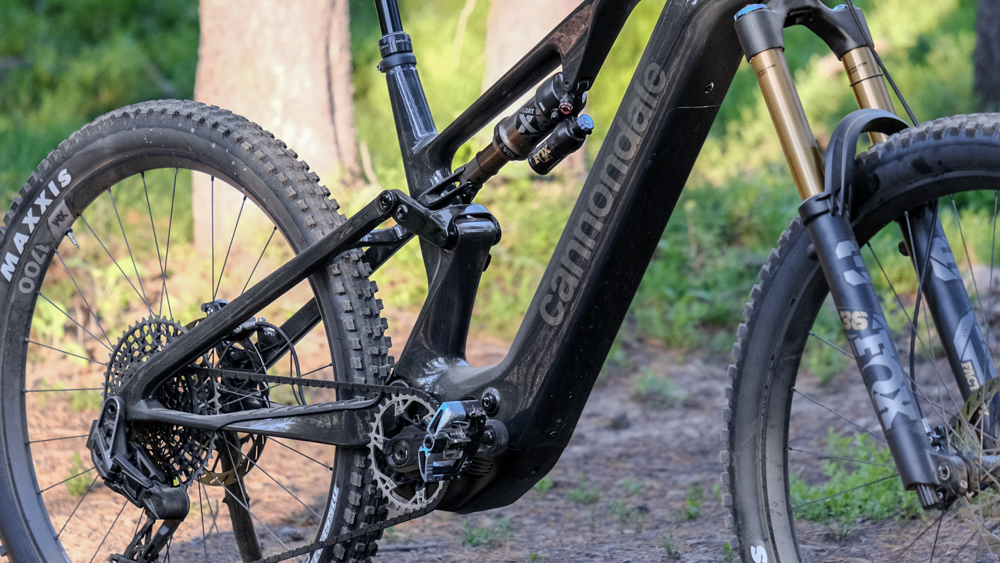
Cannondale gives you the option to run the Moterra as a 29-inch-wheeled bike or as a ‘mullet’ setup. That means the front wheel is 29 inches, while the rear wheel is 27.5 inches. The mixed wheel setup gives the rider a unique combination: the larger front wheel rolls over obstacles more easily.
Meanwhile, the smaller rear wheel increases the bike’s agility and the rider’s ability to change lines quickly. A full 29-inch setup is ideal for rolling over technical trails quickly and smoothly.
The headset can be adjusted to either steepen the head tube angle or slacken it by 1.2 degrees. A slacker head tube angle gives you more stability for chunky terrain, and a steeper head tube angle will give you more responsive steering.
Cannondale Moterra SL 1 review: performance
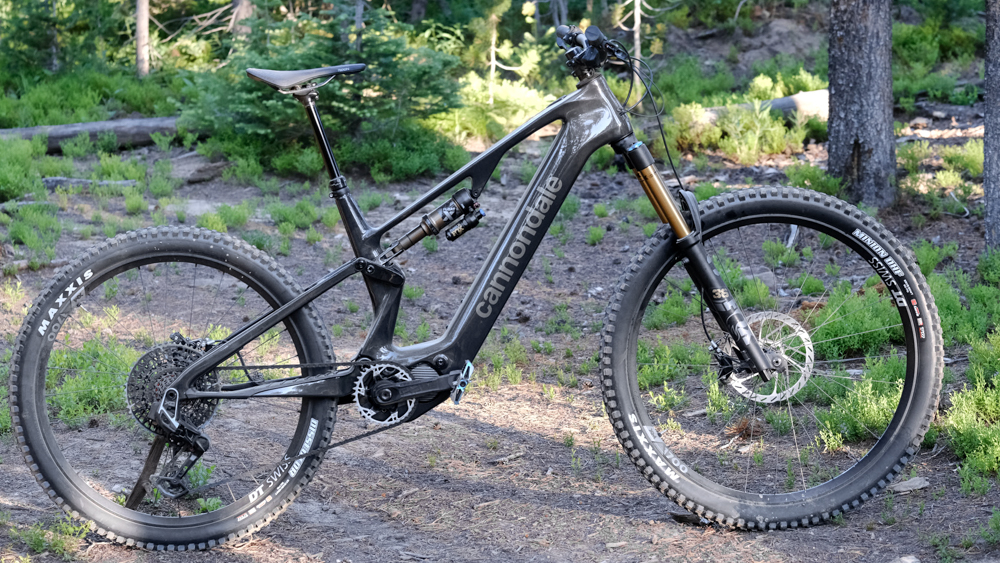
I took the Moterra to the hardest, ugliest, longest climb I could find: Belcher Hill, at White Ranch Open Space here on the front range of Colorado. Big, jagged rocks bunch up loosely on the double track, and it’s steep in places.
It’s fully exposed, so the sun beats down on you. And when you think you’re finally at the top, you reach the singletrack climb, which is even steeper. It’s over three miles of brutality.
My personal record on a non-motorized bike up this ugly climb is about 58 minutes from bottom to top. On the Moterra, I was able to do the full climb in 44 minutes — and I felt far less destroyed than I usually do. That made me more alert on the descents, which translated into more fun. And more fun is good.
On that climb, I spent most of my time in trail assist level 1 or 2, with occasional forays into 3. I didn’t really feel like I needed the fourth level at any point (though I did try it a few times), even on the steepest sections.
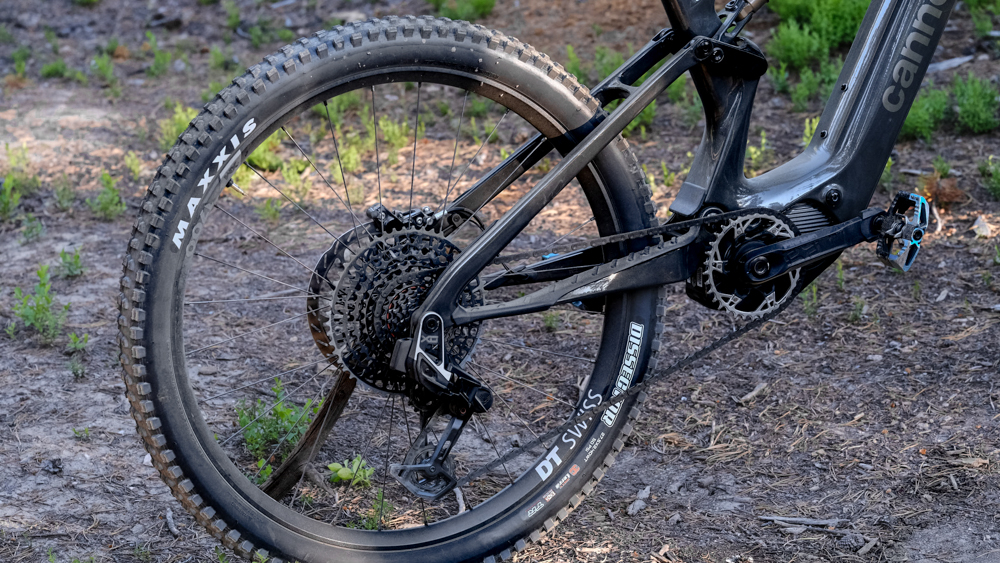
Assist level 1 feels like a barely-there push. It’s best if you’re looking for your forward momentum to be mostly you. Assist level 2 feels more assertive, and it’s in this mode that you really get a feel for how much work the motor can do.
Meanwhile, Assist level 3 feels supercharged: save this for really steep sections. And assist level 4 felt like overkill to me, but I can see it coming in handy when you’re really tired on late-day climbs, or need an extra boost for super-tricky obstacles.
The motor makes a low humming noise when you’re pedaling. I found it annoying at first, but eventually, I stopped noticing it at all. And I found it much quieter than some of Shimano’s competitors, and easier to forget about.
The assist is based on your pedaling input and tailors the power based on a torque sensor. The more power you put into the pedals, the more power you’ll get from the motor. That may seem counterintuitive at first, especially if you prefer more assistance when you’re starting to tire.
But this method makes the ride feel much more natural and keeps you pedaling rather than giving up entirely when the going gets tough. That’s vital out on the trails when a lag in momentum could have you dabbing rather than clearing an obstacle.

The Moterra’s traction was notably good. The rear wheel sticks to the trail like glue, even in loose terrain. That’s likely a combination of factors, including geometry, the smaller rear wheel, and the flex Cannondale designs into the rear chain stays.
On the descent, I found the handling to be much more predictable and easier to control at high speeds. At lower speeds, the front wheel tends to flop over a bit, due to the lax head tube angle. You’ll need to muscle it a bit more in slower tech sections.
And at all speeds, you’ll need to put more muscle into steering than you would on a non-motorized bike. That’s because there’s more weight to contend with. The battery, in particular, causes this, since it extends up the down tube.
That puts more weight up high on the bike, which you’ll need to counter when steering. It didn’t take me long to adjust to the bike’s balance point, but I did find it gave me more of an upper-body workout than I’m used to on my non-motorized bikes.
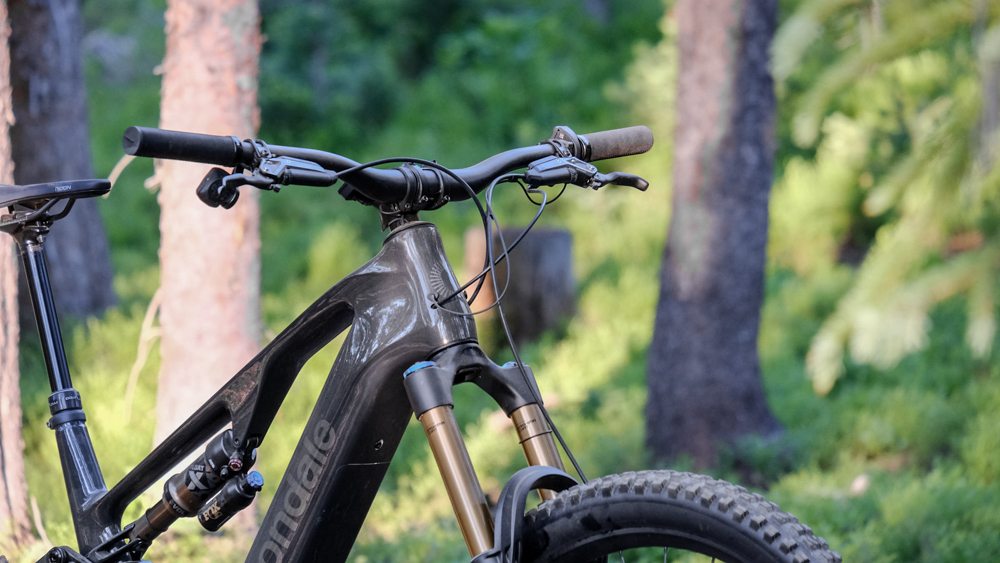
The Moterra is far more playful than I was expecting on descents. It was easy to get it off the ground and change lines quickly. The smaller rear wheel helps here. It’s a fun bike to get ripping fast on, and I loved hucking off little kickers and drops.
While the wide, flat top tube likely helps improve compliance and overall ride feel, I found it slightly problematic when climbing, and when descending at high speeds. It has a fairly pointed edge on each side, and I found myself clipping my knees on those edges frequently.
And I wish the display screen had a more obvious way to indicate which assist mode I was in at any given time. The display is quite small, which is good; it doesn’t add much to have a massive display on your handlebars. But a slightly larger indication on that small screen as to which mode is active would have been helpful.
Cannondale Moterra SL 1 review: battery life
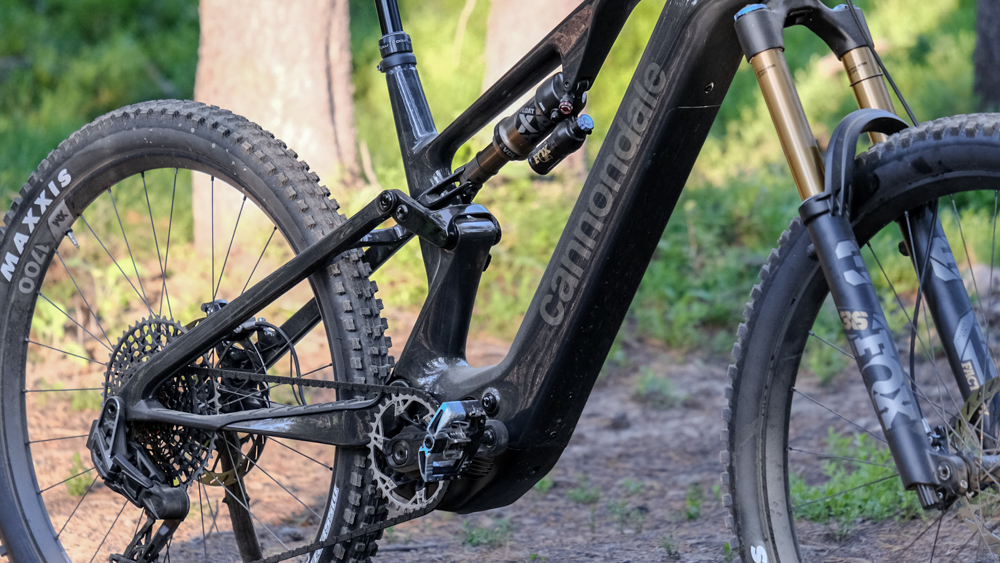
Cannondale says the battery is ‘custom,’ which likely means the company has sourced a battery from a third party, built to Cannondale’s specs. It is not removable and weighs just under 7 pounds.
On my first ride, I went to the trailhead with a full charge. I mostly used boost levels 1 and 2, with occasional forays into 3. I really didn’t feel like I needed the highest boost level (4) and only used it once.
After one hour and 40 minutes of riding, I had used two out of five bars of battery life. That translates into about 13.5 miles of riding and 2,840 feet of climbing.
Cannondale’s max advertised range is 43 miles, which squares with what I experienced. Remember: max ranges are the maximum, not the average. Your results will depend on the terrain, which assist mode you’re using, the weather conditions, rider weight, and much more.
Cannondale Moterra SL 1 review: the competition
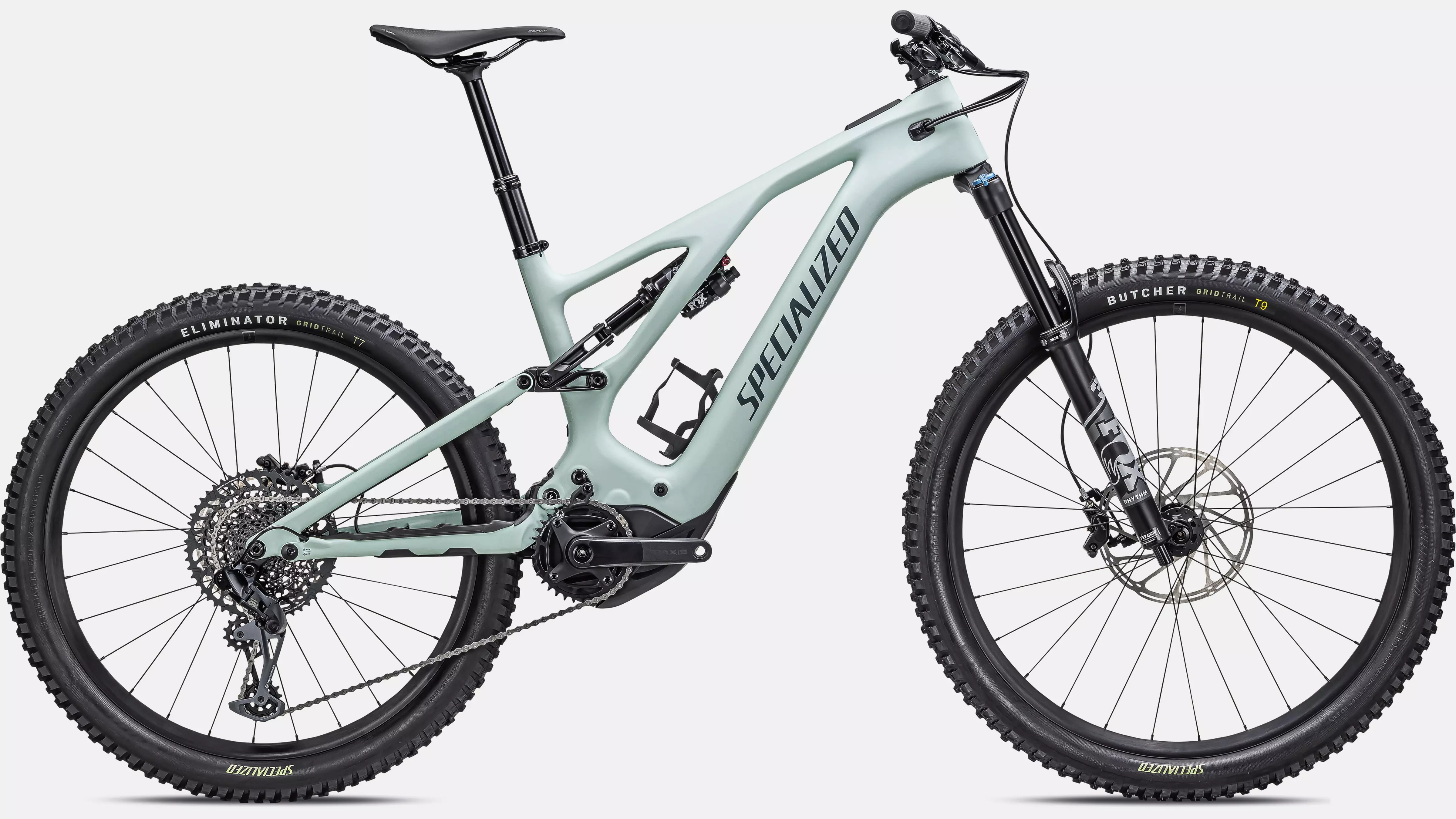
The Moterra’s most notable competition is the Specialized Turbo Levo Comp Carbon. It costs $250 more than the Moterra but similarly boasts a mid-drive motor and the same amount of front and rear suspension. The Specialized features a 700Wh battery and a Specialized proprietary motor.
Specialized advertises a five-hour range on its battery, whereas the Moterra advertises a 601 watt-hour range. Both the Moterra and the Levo Comp Carbon feature adjustable geometry, mixed wheel size, and a host of top-end components.
Should you buy the Cannondale Moterra SL 1?
The Moterra is a model of what a solid e-MTB should be. While it’s inevitably heavier than your non-motorized bike, it handles so well it’s easy to forget that.
The traction it provides on climbs, coupled with the uber-powerful assist modes, makes it an easy choice for long, ugly climbs. And once you’re at the top, the descents are just as fun.
The Moterra is nimble, easy to get off the ground, and as fast, if not faster than you are. It should be at the top of anyone’s list looking for a capable trail bike that excels up and down the mountain.
Dan Cavallari is the former technical editor for VeloNews Magazine, who currently reviews electric bikes, bike lights, and other bike accessories for Tom's Guide. In addition to VeloNews, his work has appeared in Triathlete Magazine, Rouleur Magazine, CyclingTips.com, Road Bike Action, Mountain Bike Action, CycleVolta.com, Tomsguide.com, and much more. Dan also hosts two podcasts on his site, Slow Guy on the Fast Ride: One is about cycling and other outdoor activities, while the other looks at mental health issues. Most recently, Dan also covered the 2022 Tour de France. Dan lives outside of Denver, Colorado with his family.


